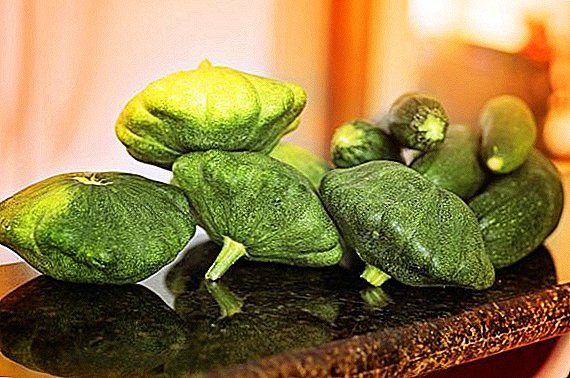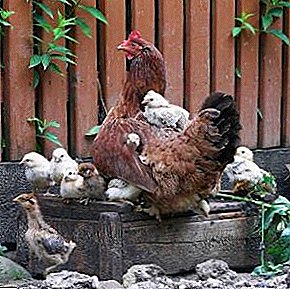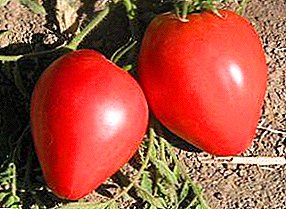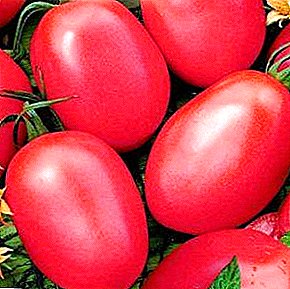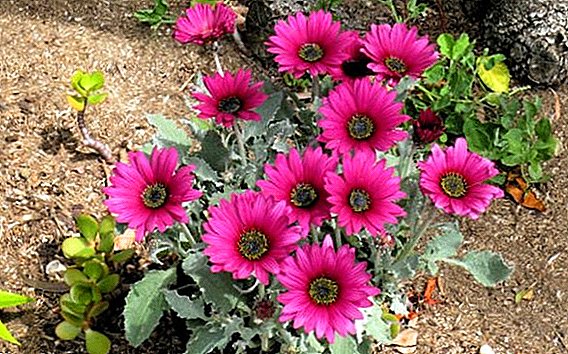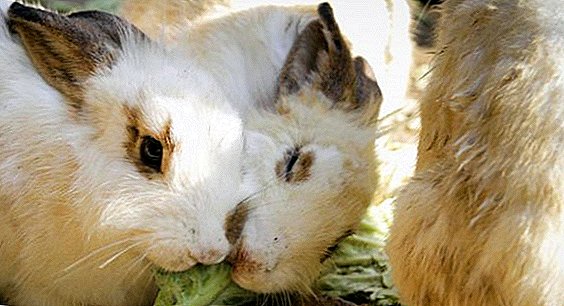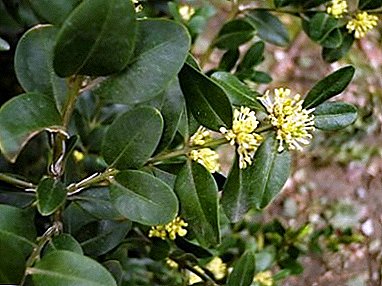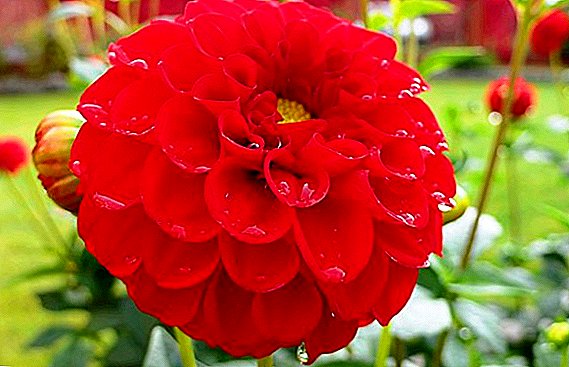
Handsome tsiperus known to people for many millennia. Thanks to the ancestors of this plant appeared writing.
Tsiperus or syt - what is it? This is a guest from the African tropics. Egyptians first noticed this plant.
Because of the lightness and durability of his steel for the manufacture of shoes, fabrics, baskets etc. And they began to make papyrus, and then parchment.
Tsiperus is extremely moisture-loving. Under natural conditions, prefers to live in a swamp or on the river bank. The Egyptians noted that the valuable plant is very fond of water and gave it the name "gift of the river", that is, "tsiperus" in Egyptian.
The plant was brought to the European continent in the 18th century. At that time, this tropical guest was available only to wealthy people who kept this miracle in the greenhouse.
Over time, tsiperus became more accessible to everyone. Having won the sympathy of the whole world, he gained several new titles - syt, sopnik.
Tsiperus perennial, come from the sedge family. Known more 500 species this plant. All species are alike. It has long straight stems, grassy leaves that form umbrella whorls, and inconspicuous beige flowers.
What does the photo look like?





Common species
Papyrus
The plant stems are straight, reach a height of 3 m, and in more comfortable growing conditions they can reach up to 5 m. The upper leaves resemble a thick rosette consisting of narrow leaf plates hanging down. Sinus leaves form multicolor up to 100 flowers. Papyrus prefers marshland, so it is better to grow it in large pots in rooms with high humidity.
Reference! Papyrus shoots are used by people for domestic needs. They are made of material for boats and paper.
Helfer
This species is adapted for planting and development in the aquatic environment, so it feels great in aquariums and decorative lakes. The plant must ensure the acidity of the soil in the range of 5 - 7.5 pH.
The height of the Helfer does not exceed 60 cm, and under water the root system develops up to 30 cm in length. The plant is propagated by dividing the bush.
Umbrella
Perennial plant with straight rounded or triangular stems. It has long, pointed at the end of the leaves, which gracefully hang down. The length of the leaves is small, only 25 - 30 cm. A crown resembling an umbrella forms at the top. This feature and formed the basis of the name of the plant. Umbrella Tsiperus is a perennial, already in the second year of its development reaches 2 m. Height.
Regular leaves
Quite whimsical in the form of care, preferring deep spacious pots and loose soil. The leaf plates are narrow and rather long, reaching 1 cm in length. The height of the plant is 1.5 m.
A distinctive feature of this species is the yellow inflorescence, resembling spikelets of wheat, with small flowers on the sides.
Elegant
It is the smallest plant of all types of tsiperus, which does not grow above 30 cm. At the expense of its miniature, it looks quite elegant and catchy. It does not need special care and watering, so it is also considered unpretentious in the content.
Home care
This plant can be used to create a tropical corner home, since it is very decorative, its stems can be up to half a meter long. This is a wonderful neighbor for other moisture-loving plants, such as orchids.
It grows in very wet soil, while evaporating a large amount of moisture, which can be very useful for other plants.
On the video you can see how to care for tsiperus:
Lighting
It prefers well-lit places, but can adapt to grow in the shade. Backlight is recommended in the dark season.
Temperature
The plant is best kept at a temperature of 18-25 ° C. It is better not to lower the temperature below ten degrees.
Air humidity
As already noted, tsiperus very moisture-loving. For best leaf formation, it is recommended to spray it with water at room temperature as often as possible. A pot must be kept in a container filled with water.
Watering
For this plant, watering a lot does not happen. It is advisable to water as often as possible, pre-separated with water at room temperature, make sure that the ground was always wet.
Top dressing
This plant has no dormancy period. It grows year round. Therefore, it is necessary to feed it constantly with the most usual complex fertilizer. In spring and summer - every two weeks, and in autumn and winter - once a month.
The soil
Clay with turf, peat, humus and sand in equal proportions. The soil should be slightly acidic. To retain moisture, you can add fine charcoal.
Transfer
This procedure is carried out in the spring. Transplanted into a slightly larger one, but necessarily high pot. Can be without drainage.
How to trim?
Timely and correct pruning of the plant favors its growth and is an excellent prevention against disease. To do this, you first need to cut off the old yellowish leaves.
Variegated species quickly lose their proper color, so they need to cut off all the green shoots. If in the sinuses began to appear strange brown flowers growing in stripes, it is worth removing them too.
Flowers
If the plant in the house is comfortable, then at the beginning of spring it may bloom.
ATTENTION! Pollen of flowers is poisonous! It can also cause severe allergies. Therefore, be careful yourself and do not let the flowers of children and animals.
The flowers themselves are quite inconspicuous, but they give tsiperus additional charm. After flowering, the stems from the flowers must be cut to avoid rotting.
Pests
Syt is very resistant to pests. The plant has a very powerful immunity. However, if the air becomes very dry, then it can encroach on it:
- spider mite;
- thrips;
- mealy worm;
- whitefly;
- schitovka.
REFERENCE! In the event of the appearance of pests, the umbrella leaves dry and turn yellow.
IMPORTANT! When the first signs of pests, act! All actions are carried out in rubber gloves:
- Prepare a solution from household soap;
- Treat cyperus with gauze soaked in this solution;
- According to the instructions, prepare insecticidal preparations;
- Spray the whole flower.
- Put the plant in a room with low temperature (below 20 degrees);
- Be sure to spray the flower with plenty of water with settled water;
- Prophylacticly repeat the procedure after two weeks.
Dry the tips of the leaves? This means that the plant should be sprayed more often with water.
Leaves turn bright in color? The plant does not have enough feeding. It grows too intensively.
Breeding
For reproduction tsiperus divide. This is usually done in the spring, during transplantation. It can also be propagated. grafting leaves from the top of the plant.
When grafting there are some features. Apical stalk is cut and placed in wet sand or water. leaves down and cutting up. After a couple of weeks, there are white roots on the base of the leaves.
After that, the stalk is planted in wet soil. In a few weeks, the first shoots will appear.
Better yet, do not cut the stem, but tilt the stem and place the top in a jar of water. After the appearance of the roots, the stalk can be cut and planted in moist soil.
Growing from seed
 After buying the seeds you need to prepare small bowls with the ground.
After buying the seeds you need to prepare small bowls with the ground.
It is better to make the soil as follows: mix peat, humus, sand in equal quantities; add three quarters of leaf to this mixture.
To retain moisture in the earth mixture, it is advisable to add a little crushed charcoal.
Then in the prepared dishes we scatter the seeds on the surface of the earth and gently press with the palm. Wrap plate with plastic wrap. You can put the glass on top.
The main condition for good germination is warm and abundant watering. Give the seedlings to grow and transplant them into separate containers. Put in partial shade!
ATTENTION! Under the direct rays of the sun young saplings may die.
The healing properties of the plant
This is a plant with powerful energy. It is useful to keep him in the bedroom or office, as his presence eliminates insomnia, relieves headaches, positively affects memory and vision. This is due to the stimulation of blood circulation in the brain. He is very fond of cats. Therefore, for the safety of the plant, it is desirable to protect it from fluffy purring.
Benefit

- This plant protects its owners from depression and bad mood;
- Do you have a talker in your family and it annoys you incredibly? Get yourself a couple tsiperusov - and your irritation will go away;
- This plant will give you the gift of clairvoyance. In his presence, you will always understand when they lie to you. Therefore, syt useful to keep in the room for negotiations. Or bring him there during business meetings;
- Do you have difficulty absorbing new information? And here again, this wonderful plant will help you;
- Overcame self-pity and want to cry? With his healing effects, Tsiperus will transform your emotions, and you will begin to act in the right direction.
Tsiperus - a completely unique plant. Unpretentious, with healing energy, very grateful. This umbrella of adversity and bad mood!


